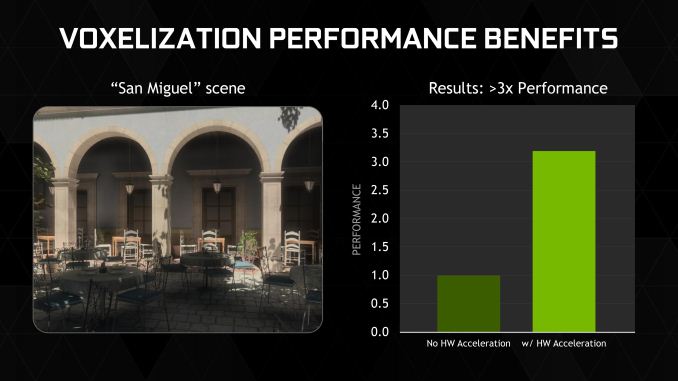There's the rub! I agree with you and am not seeing hardware requirements, but there are others who feel claims MS customised the HW point to a possibility of the hardware having DX12 specific features. Few of us commenting have any experience with DX12 though and devs weighing in helps a lot.

GDC should give some hard references.
Agreed. I feel as though it'll be subtle additions for a specific types of algorithms that would benefit from dedicated hardware gates/or just additional flag bits in a register as opposed to crunching it through the pipeline. IIRC on this forum, really the last step was to get from rasterization to eventually the quality of ray tracing. There were talks a long time ago that after DX11 there would be no need for another directX, I recall reading this somewhere on this thread, that everything was programmable enough such that there would be no longer a need for additional hardware, just more horsepower.
On that note we see that nvidia is pushing for vxgi, an approximation of ray tracing, I'm not sure how far it can scale, but it shares some characteristics.
I don't know nothing about graphics, aside from some basics, I'll likely never get to a level of understanding that most of you have, or if it happens, it'll occur over the next 6 years as I spend more time learning. But when I look at a graph from nvidia for maxwell 2 that has this:[Anandtech] Joining these features as the final VXGI-centric feature for Maxwell 2 is a feature NVIDIA is calling Multi-Projection Acceleration. A big part of MPA is a sub-feature called viewport multicast. In viewport multicast Maxwell 2 can replay the necessary geometry to all of the viewports in a single pass. At the hardware level this involves giving the hardware the ability to automatically determine when it needs to engage in viewport multicast, based on its understanding of the workload it's receiving.

So when it comes to voxelization, it appears that these features are indeed helpful. These aren't dedicated processors, you probably won't be able to spot these features on a microscope die shot or on a chipworks diagram. As per the chart the software version is completely doable, but even with a 980 Maxwell 2, you could still obtain 3x more performance in this particular scenario if you leveraged the hardware variant of it. The concept of horsepower trumps all only applies to scenarios where power and heat are not an issue, but in the mobile space, in the console space it is an issue, they need other alternatives. They need to do more with less, and having simple additions like this will help.
With respect to this thread, XBOX needs help, like badly. It doesn't have extra CUs to muscle through algorithms, it's power rating is just too low. The more I read, the more I sincerely doubt that MS while building this low power chip decided that yea, 12 CUs are enough to last the next 7 years when all the new techniques like vxgi are coming out. They clearly didn't want to blow their power requirement, so I'm on the side that they've invested in hardware that will allow the console to scale with future techniques and graphical features. If games decide to not take advantage of those techniques and scale with their own methods, we're going to see Xbox slide into uselessness rather fast.

